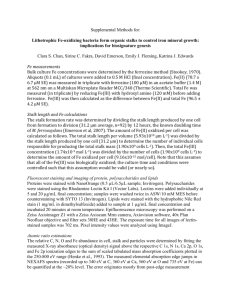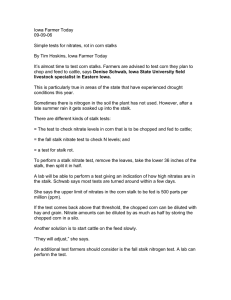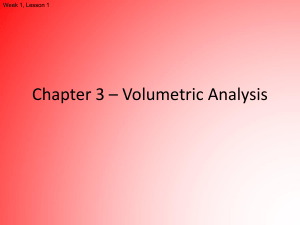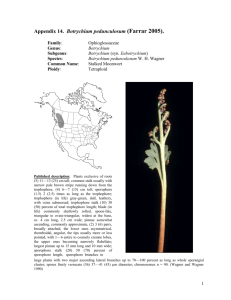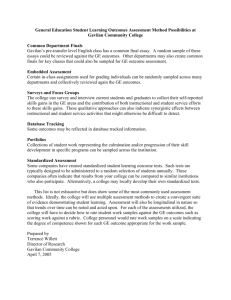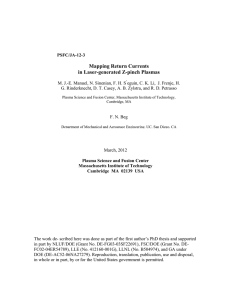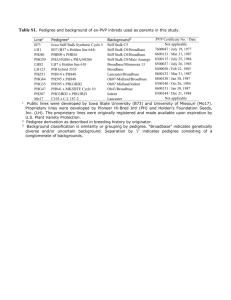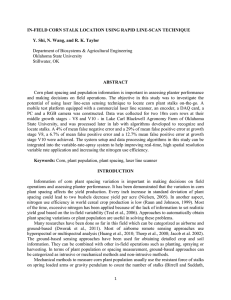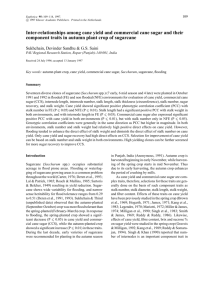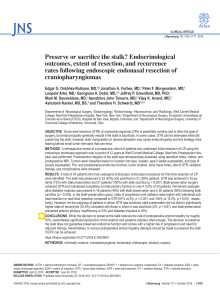Additional file 2
advertisement
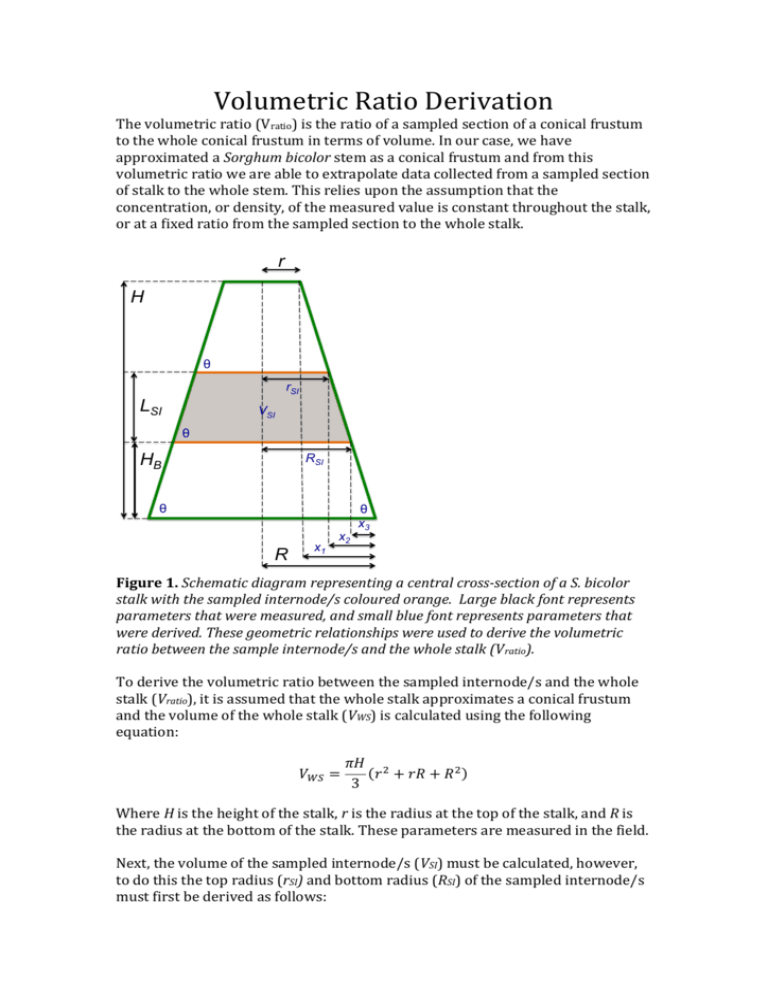
Volumetric Ratio Derivation The volumetric ratio (Vratio) is the ratio of a sampled section of a conical frustum to the whole conical frustum in terms of volume. In our case, we have approximated a Sorghum bicolor stem as a conical frustum and from this volumetric ratio we are able to extrapolate data collected from a sampled section of stalk to the whole stem. This relies upon the assumption that the concentration, or density, of the measured value is constant throughout the stalk, or at a fixed ratio from the sampled section to the whole stalk. r H θ rSI LSI VSI θ HB RSI θ R x1 x2 θ x3 Figure 1. Schematic diagram representing a central cross-section of a S. bicolor stalk with the sampled internode/s coloured orange. Large black font represents parameters that were measured, and small blue font represents parameters that were derived. These geometric relationships were used to derive the volumetric ratio between the sample internode/s and the whole stalk (V ratio). To derive the volumetric ratio between the sampled internode/s and the whole stalk (Vratio), it is assumed that the whole stalk approximates a conical frustum and the volume of the whole stalk (VWS) is calculated using the following equation: 𝑉𝑊𝑆 = 𝜋𝐻 2 (𝑟 + 𝑟𝑅 + 𝑅 2 ) 3 Where H is the height of the stalk, r is the radius at the top of the stalk, and R is the radius at the bottom of the stalk. These parameters are measured in the field. Next, the volume of the sampled internode/s (VSI) must be calculated, however, to do this the top radius (rSI) and bottom radius (RSI) of the sampled internode/s must first be derived as follows: Firstly, an isosceles trapezium from a centred cross section of the conical frustum that represents the whole stalk is taken (see figure 1). Using simple geometry it can be determined that 𝑅𝑆𝐼 = 𝑅 − 𝑥3 (see figure 1)……………………………………………………Equation 1. 𝐻 𝜃 = tan−1 𝑥 …………………………………………………………………………Equation 2. 1 𝑜𝑝𝑝𝑜𝑠𝑖𝑡𝑒 (since 𝜃 = tan−1 𝑎𝑑𝑗𝑎𝑐𝑒𝑛𝑡 from the right angled triangle with sides H and 𝑥1 ) and tan 𝜃 = 𝐻𝐵 𝑥3 ………………………………………………………………………Equation 3. So, substituting equation 2 into equation 3 for 𝜃 gives: 𝑥3 = 𝐻𝐵 𝐻 tan tan−1 𝑥 1 = = 𝐻𝐵 𝑥1 𝐻 𝐻𝐵 (𝑅−𝑟) 𝐻 since 𝑥1 = 𝑅 − 𝑟 (see figure 1) ∴ substituting into equation 1 gives 𝑅𝑆𝐼 = 𝑅 − 𝐻𝐵 (𝑅 − 𝑟) 𝐻 and by the same logic 𝑟𝑆𝐼 = 𝑅 − (𝐻𝐵 + 𝐿𝑆𝐼 )(𝑅 − 𝑟) 𝐻 So, since we now know RSI and rSI, in terms of parameters that were measured in the field, and since LSI was also measured, the volume of the sampled internode/s can now be calculated using the equation for a conical frustum as follows: 𝑉𝑆𝐼 = 𝜋𝐿𝑆𝐼 2 (𝑅𝑆𝐼 + 𝑟𝑆𝐼 𝑅𝑆𝐼 + 𝑟𝑆𝐼2 ) 3 So, to calculate the volumetric ratio (Vratio) we simply divide VSI by VWS 𝑉 𝑉𝑟𝑎𝑡𝑖𝑜 = 𝑆𝐼⁄𝑉 𝑊𝑆
